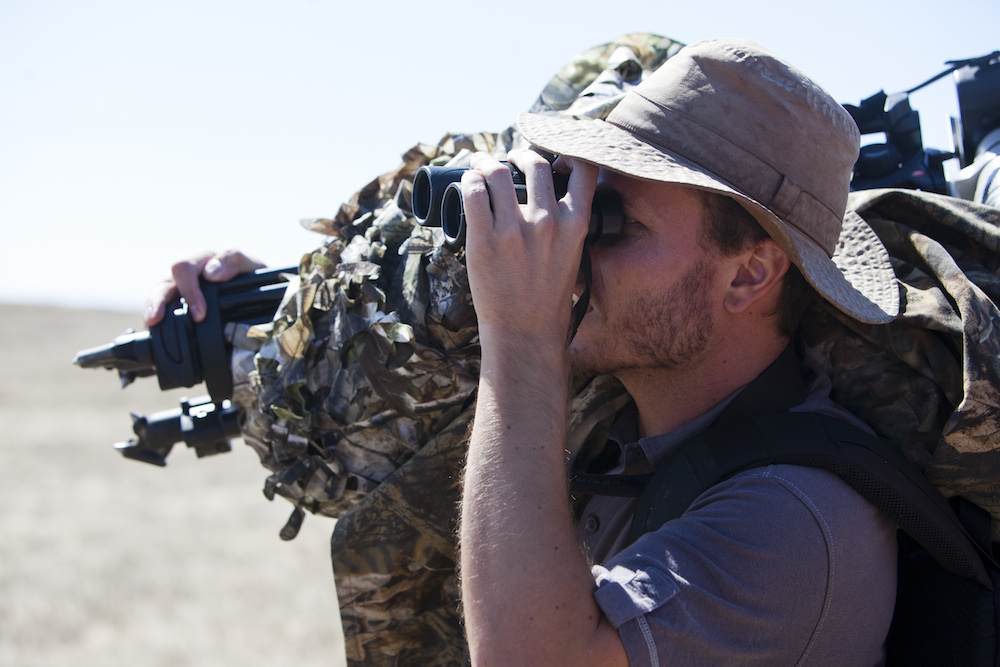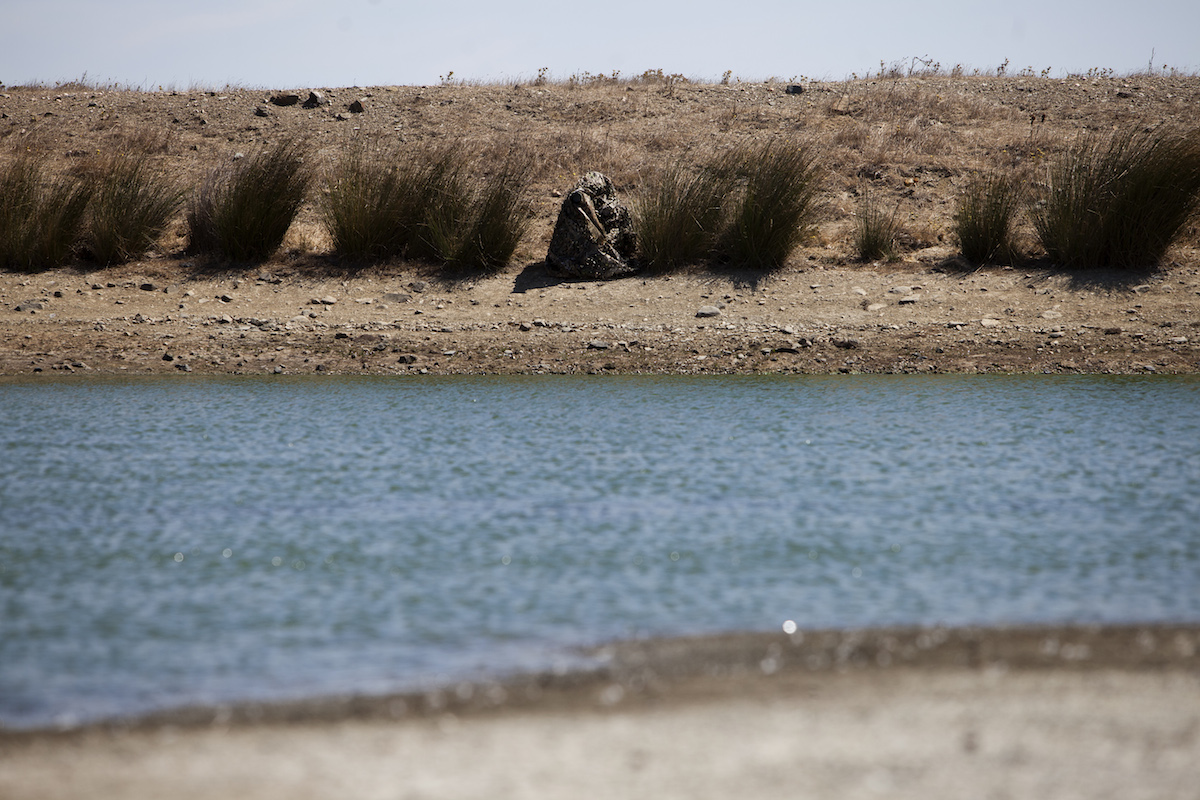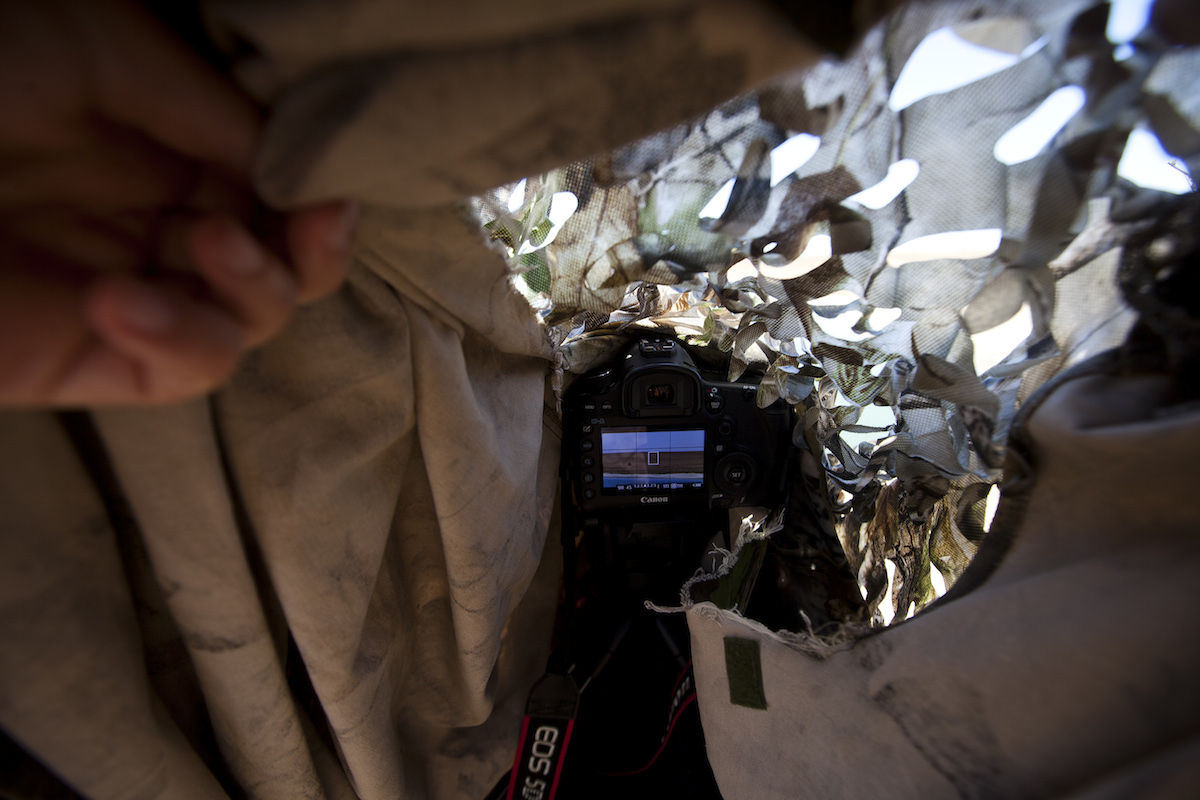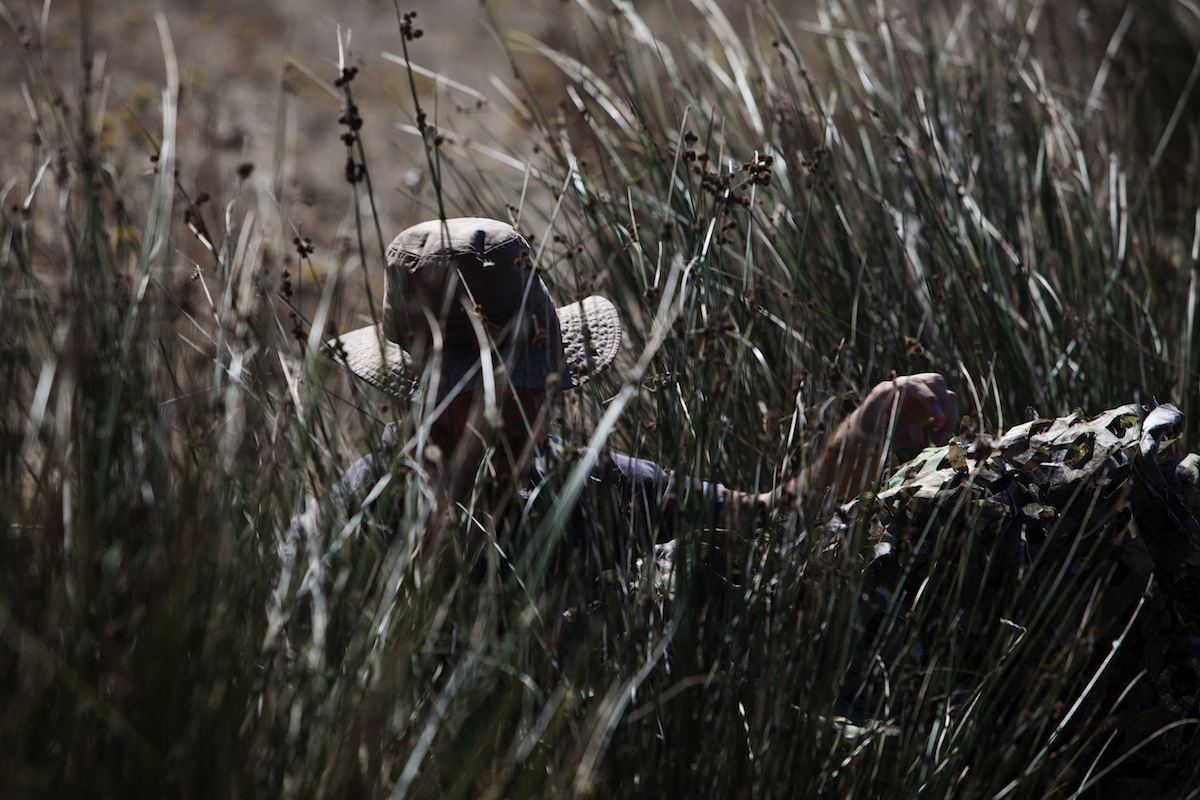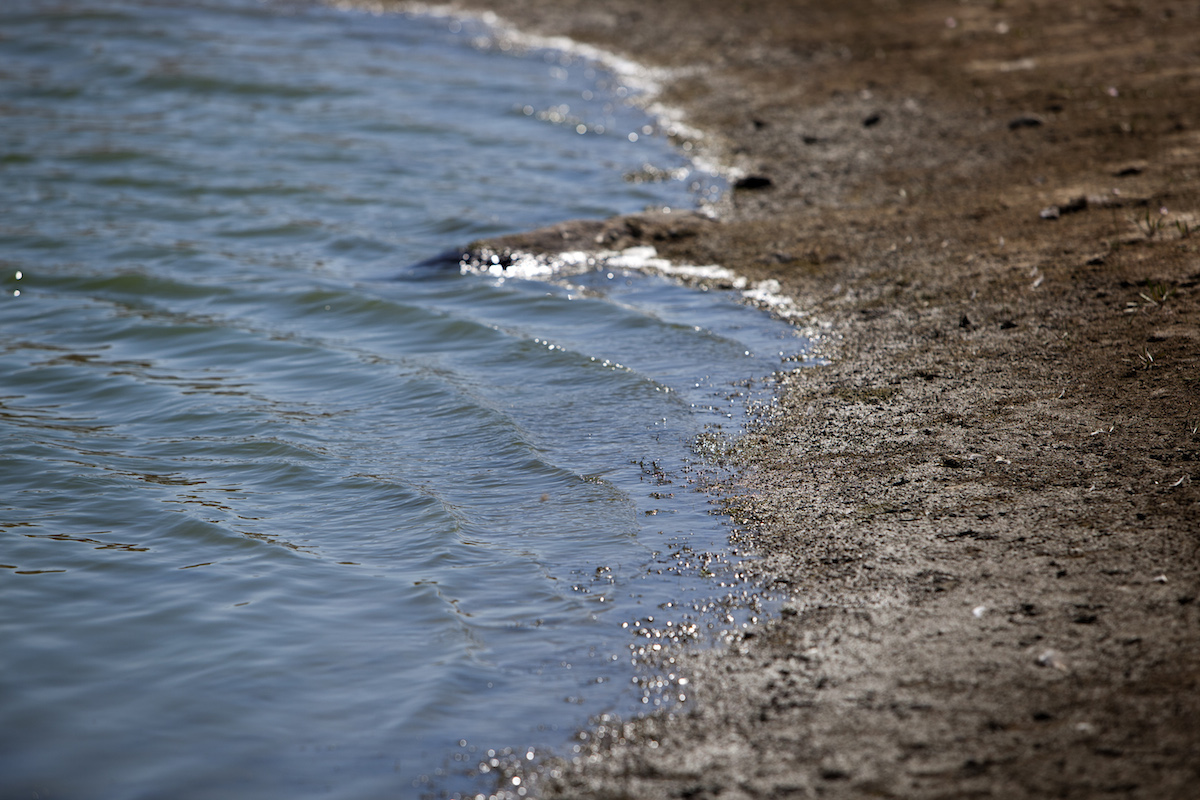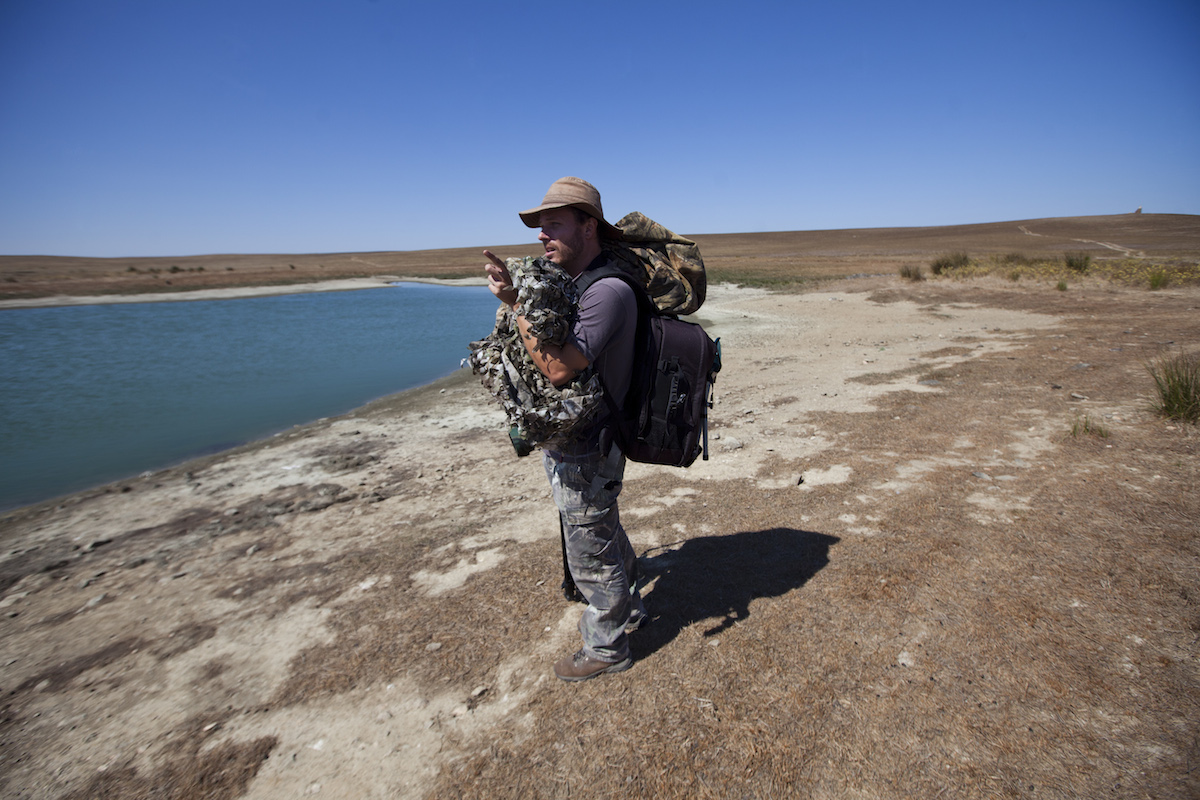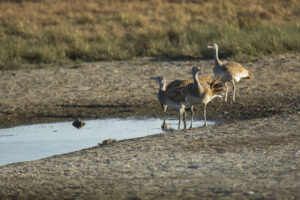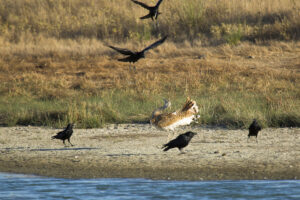Deer, eagles, chameleons, rivers, mountains and forests are the protagonists of a wild Portugal removed from behind the scenes and put on stage by Daniel Pinheiro. He gives them prominence, time and importance so that we can see what we cannot by ourselves. How can someone turn others into Nature lovers?
The answer to this question, really, starts by the end. The result of thousands of hours of work, on the field and in the studio, is achieved because Daniel Pinheiro is an admirer of the natural world and likes every species he gets to meet. “From reptiles to lichens, everything is special”. That’s why he tells stories. Like these ones.
But what is behind Nature documentaries? We are in Castro Verde plains, in Alentejo (in the south of Portugal), to know how everything begins.
Daniel Pinheiro goes to the pond with a living praying mantis tucked into his rucksack. Blue sky. Wind.
Behind us, a woodchat shrike hastily flew from the wire fences, as if we were not reliable.
It’s not the most usual thing for Daniel to carry a praying mantis in his rucksack. In fact, it was by chance that he came across this little straw coloured insect and he put it in a plastic package to film it later in the day. He could get good images. Or not. But before all that he settles on the banks of the pond, hidden among the vegetation. Just like a spy.
“I am not a biologist, I am a self-taught”, says Daniel, 34 years old. “What I know I have learned during the many hours I’ve spent on the field, alone, watching things happening, talking to people I met and asking help from biologists and experts”.
No one starts filming nature without further ado. First it is necessary to master the technical part.
“The mastership I did in Salford University, England, for one year was crucial to me ”, he tells. And also his participation in productions in Portugal, Spain, Peru, Brazil and Argentina.
Then it’s necessary to study the animals, the landscapes, the seasons. This is not a sacrifice for someone interested in nature since he was a child, especially reptiles. “I enjoyed spending hours looking at them. In Anadia, where I was born and grew up, I was in direct contact with the field. I was called ”Daniel of the Snakes” because I liked to catch them”.
However, today he isn’t here for the snakes. What makes him set up the tripod for the camera and the brown and green shelter that allows him to disappear in the landscape is something entirely different. He is waiting for the black-bellied sandgrouse (Pterocles orientalis). And they haven’t arrived yet.
Daniel knows he needs to film this bird species because he follows a script he previously made. “I start writing a script with a narrative and with the species and behaviors that I need in order to tell the story.”
Then he goes to nature. Discover the animals takes time. “We need to invest a lot in a place, arrive early, usually at the sunrise, and stay there till the end of the day, when the animals are more active”.
Before installing the equipment it’s necessary to look for the species, almost like a detective work, to get images of toads burying themselves in the ground or scorpions moving away from rocky crevices. “I watch attentively where the animals use to go and I wait. I was born to be in nature where I never get lost; but I quickly get lost in cities”, he laughs.
And after installing the equipment he waits for those special moments. “The secret”, he tells us, “is turning chances into probable things”.
Meanwhile on the bank of the pond, among the tall grass, the black-bellied sandgrouse show how long the wait can be.
We go on waiting for the moment, trying not to be noticed. And that can be an art by its own right. And Daniel is an expert on that. On account of this art he had a herd of cows about to “trip” over him. “Once I stood for hours to film a little bustard (Tetrax tetrax) when I was surrounded by cows grazing. As they had already spoiled my work, I got up the shelter cloth, I peeped and told them: So what?!”. They took five seconds to begin to flee”, he remembers with a smile. Less than that took a farmer who was awfully frightened when Daniel got up suddenly from the bushes to avoid being run over by the tractor.
In fact the life of a documentary of nature producer is not only inspiration and beauty; it has also its moments. “Most often it is an enormous frustration”, he admits. “Most shots are bad plans, such as when I catch the animal very far. To love nature and documentaries is not enough; one needs to make sacrifices and have the strength to try again”. After all, nature is unpredictable.
“If at the end of filming I have 70-80% of the script, that is very good”, he adds. Then he adapts the script to the images he has and tries to fill the gaps with other sequences he had not foreseen and that in the meantime he managed to capture.
“What I want to do with the nature documentaries is to show the general public the species we have, so that they like them”. – DANIEL PINHEIRO
Suddenly, three black-bellied sandgrouse fly over the pond. But they notice intruders and fly away before anything. Gone were the images.
Later in the day, neither the praying mantis cooperated and Daniel put it where he had taken, returning it to the quiet of the plains.
It looked like another day of waiting, without those special moments. But at the very end of the day, coming back home, Daniel sent us a message. He had returned to the pond at the sunset and seven great bustard (Otis tarda) were drinking water and kept him company. He had won the day.
[divider type=”thin”]Now it is your turn. Daniel Pinheiro gives four advices for those who want to make their own nature documentaries.
– To know the best time to observe what. Generally the best time of the year to film is spring, because there are more extra activities, being the breeding season, for example.
– To visit the chosen region with guides and people who knows local nature.
– You can also install the equipment from the car. One sees a lot.
– To wait. A lot.

